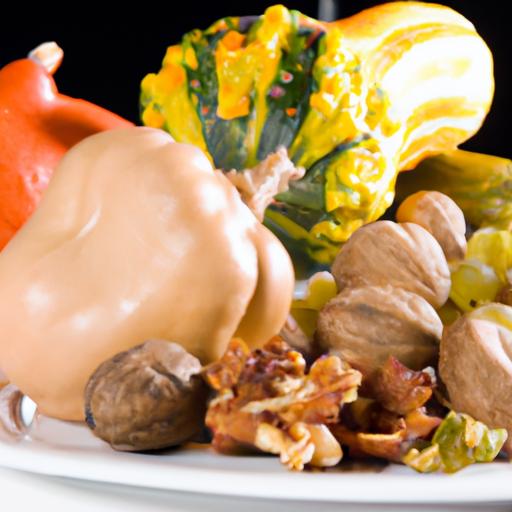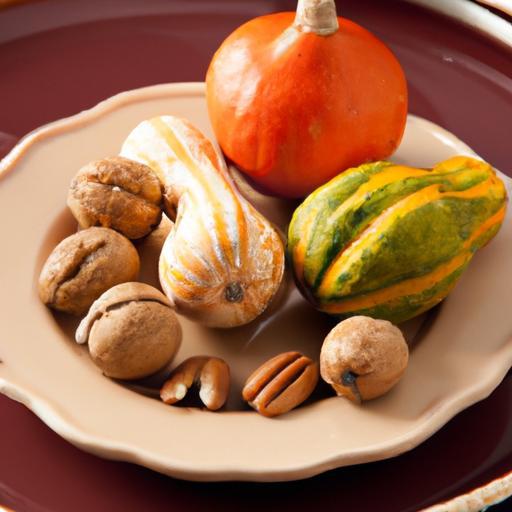In the quiet embrace of late autumn, when the forest floor is carpeted with a mosaic of amber and gold, a hidden treasure awaits the curious forager: the elusive butternut, or white walnut. This soulful nut, nestled within the rugged branches of its namesake tree, carries a flavor both rich and delicate, a whisper of the wild that has nourished generations. Foraging butternuts is more than a simple harvest-it is a dance with nature’s rhythms, a careful craft blending knowledge, patience, and reverence. In this creative guide to white walnut harvests, we’ll embark on an adventurous journey through the woods, unlocking the secrets of finding, collecting, and savoring these golden gems. Whether you’re a seasoned woodsman or a weekend wanderer, prepare to delve deep into the art of foraging butternuts, and rediscover the forest’s edible bounty in a way that is both sustainable and soul-stirring.
Foraging Butternuts: A Creative Guide to White Walnut Harvests
Foraging butternuts connects us deeply to the wild, unlocking the bounty of white walnuts – a treasure for both palate and pantry. This guide will inspire you to recognize authentic butternut trees in their native habitats, master the perfect timing for harvest, and handle your finds with confidence and care. Embark on a journey where culinary creativity meets sustainable wildcrafting, elevating humble nuts into delicious seasonal delights.
Prep and Cook Time
- Preparation: 20 minutes (including cleaning and shelling)
- Harvesting Time: 45 minutes to 1 hour
- Cooking Time: 30-40 minutes (optional, depending on recipe)
Yield
Approximately 2 cups of shelled butternut nuts (from about 15-20 medium-sized nuts)
Difficulty Level
Medium – Requires some knowledge of foraging and safe handling of nuts
Ingredients
- 15-20 ripe butternuts, freshly foraged and cleaned
- 2 tablespoons raw honey (optional, for roasting)
- 1 teaspoon sea salt (for seasoning)
- 1 teaspoon cinnamon (optional, to enhance sweetness)
- 2 tablespoons olive oil (if roasting)
Instructions
- Identify the trees: Look for medium to large trees with oblong, light green leaves composed of 11-17 leaflets. Butternut bark is rough, grayish-brown with deep ridges that form irregular diamond patterns. The nuts hang singly in yellow-green husks that turn brown and brittle in fall.
- Harvest at the right time: Forage after the husks have turned brown but before the nuts begin to fall to avoid loss. Early October is ideal in most temperate climates.
- Collect nuts carefully: Use gloves and wear long sleeves; the husks release a sticky, slightly toxic sap that can irritate skin. Gently knock nuts from branches or pick them up from the ground if freshly fallen.
- Clean the nuts: Remove the husk completely outdoors or in a well-ventilated area. Rinse the nuts under running water and dry them on a towel to prepare for shelling.
- Shell the nuts: Use a nutcracker or a small hammer to crack the shells. Aim to preserve the walnut halves intact.
- Optional roasting: Preheat your oven to 325°F (160°C). Toss shelled butternuts in olive oil, honey, cinnamon, and sea salt. Spread on a baking sheet in a single layer and roast for 15 minutes, stirring halfway through.
- Storage: Store fresh shelled butternuts in an airtight container in the refrigerator for up to two weeks, or freeze them for longer preservation.
Chef’s Notes and Tips for Success
- When foraging, respect private property and local regulations – never strip an entire tree.
- Pay attention to husk color and firmness; immature nuts are bitter and less flavorful.
- Using gloves is highly recommended to avoid sap irritation.
- For an alternative snack, soak shelled butternuts in salted water overnight before roasting to reduce bitterness even more.
- Try grinding fresh butternuts to use as a flavorful flour substitute in baked goods, adding earthiness and depth.
- To make the most of your harvest, roast nuts in small batches to ensure even cooking and crunchy texture.
Serving Suggestions
Enjoy freshly roasted butternuts as a nutrient-rich snack or add them to autumnal salads with roasted squash, kale, and dried cranberries. Sprinkle chopped butternuts over creamy mashed potatoes for added crunch or fold into grain bowls alongside roasted vegetables and fresh herbs. Garnish with a light drizzle of aged balsamic or a sprinkle of flaky sea salt to enhance the natural sweetness.

| Nutrient | Per 1/4 cup (30g) Shelled Butternuts |
|---|---|
| Calories | 190 |
| Protein | 4 g |
| Carbohydrates | 3.5 g |
| Fat | 18 g (mostly healthy fats) |
For an in-depth look at nut harvesting and sustainability, check our Wild Food Harvesting Guide and visit the US Forest Service Wildflowers Site for expert botanical resources on butternut trees.
Q&A
Q&A: Foraging Butternuts – A Creative Guide to White Walnut Harvests
Q1: What exactly is a butternut, and why should I care about foraging it?
A1: The butternut (Juglans cinerea), also known as the white walnut, is a charmingly unique member of the walnut family. Its rich, buttery-flavored nuts make it a treasure for foragers and food lovers alike. Beyond the taste, foraging butternuts connects you to the rhythm of the forest and the deep, earthy traditions of wildcrafting. Plus, it’s a chance to harvest a rare, often overlooked nut before they drop from the trees in a cascade of autumn gold.
Q2: When is the best time to forage butternuts?
A2: The magic window to gather butternuts is typically late September through October. Look for nuts that have begun to fall or are easily shaken loose. The greenish husks will start to crack and soften, revealing the prized seeds inside. Timing your harvest just right ensures you pick the freshest, most flavorful nuts before squirrels and other woodland critters get the jump!
Q3: Where can I find wild butternut trees?
A3: Butternuts are native to the northeastern and midwestern regions of North America. Hunt for them in mixed hardwood forests, often near streams or low-elevation areas. Their pale, grayish bark and distinctive oblong leaves make them stand out if you know what to look for. Just remember to forage respectfully – always heed private property boundaries and sustainable picking practices.
Q4: How do I safely handle and process butternuts after harvesting?
A4: Careful with those green husks – they release a walnut juice that can stain your hands and clothes a dark, nutty brown. Wearing gloves helps! To process the nuts, first remove the husks and wash off the residue. Then dry the nuts in a well-ventilated spot for several weeks until the shells harden. Once dried, crack open these edible gems and enjoy their sweet, buttery flavor in baking, cooking, or straight from the shell.
Q5: Are butternut trees endangered or at risk?
A5: Sadly, yes. Butternut populations are declining due to a fungal disease known as butternut canker. This makes foraging a bittersweet adventure-treasured nuts from increasingly scarce trees. Engaging in seed collection and plantation efforts can help preserve these gentle giants for future generations, turning your foraging into a small act of conservation.
Q6: Beyond eating, what other creative uses do butternuts have?
A6: Butternut wood is soft and easy to carve, historically favored by woodworkers and artisans alike. The husks can create a natural dye, bathing fabrics in warm, earthy browns and yellows. Plus, the nuts’ rich oils have been used in medicinal salves and traditional remedies. For the creatively inclined, butternuts offer a palette of possibilities-from gourmet dishes to handmade crafts.
Q7: Any pro tips for beginners wanting to forage butternuts?
A7: Start by learning to identify the tree and nuts confidently-it’s worth joining a local foraging group or guided walk. Be patient and wear gloves, as the husks stain. Collect only what you’ll use, leaving plenty for wildlife and future harvests. And don’t be afraid to experiment with your finds-roast them, crush them into nut butter, or bake them into breads. Each nut is an invitation to connect with nature’s wild bounty in a delicious, imaginative way.
With this creative guide in hand, you’re ready to venture into the woods and harvest the buttery wonders of butternut trees. Happy foraging!
Future Outlook
As the golden hues of autumn fade and the quiet whisper of winter draws near, the humble butternut tree stands as a guardian of nature’s sweet, buttery treasure. Foraging butternuts is more than a simple harvest-it’s a journey into the heart of the wild, a blend of patience, respect, and discovery. By learning to identify, gather, and handle these creamy nuts, you not only unlock a unique culinary delight but also reconnect with a timeless tradition of sustainable living. Whether you’re a seasoned forager or a curious beginner, the white walnut offers a rewarding challenge and a flavorful reward-reminding us that nature’s pantry is vast, generous, and waiting just beyond the beaten path. So, venture forth with open hands and a keen eye, and let the butternut’s rich bounty inspire your kitchen creations and deepen your appreciation for the wild world around us.


